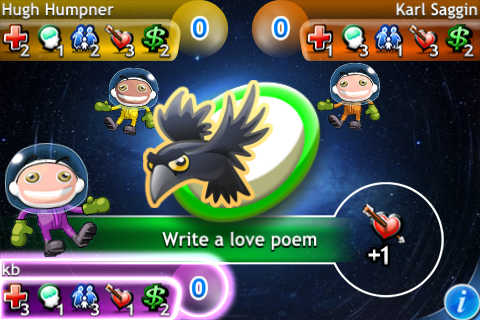
I’ve been playing Left4Dead and I’m totally in love with it.
It’s a ‘game’ in a purer sense than many shooters…it’s a sports-like experience in terms of dynamics and phases of play. The game feels very smart in terms of dramatic pacing via mechanics: Each enemy class represents a different tactical experience, rising and falling in intensity as players move through a solid structure, from safe zone to labyrinth to arena to labyrinth to climax to safe zone. And each mix of enemy classes represents a different tactical experience. The variability in enemy spawning and items feels almost perfect.
It’s a great example of excellent mechanical differentiation. This is best seen with regard to enemy classes (witch, boomer, etc), but it’s all over the place (zombie-attracting pipe-bombs vs wall-of-fire molotov cocktail; zombies can’t open doors but have to batter them down; etc). I’m constantly seeing small, well differentiated mechanics that enhance the game in some way…that can be used tactically by players in different contexts. Enforced co-op mechanics are some of the game’s most interesting features and really matter a lot when a team is trying to survive a big finale battle. The game constantly gives the player clear feedback, with minimal noise. You get messages for goals, for bragging-rights, dynamic events, etc. Some of this is conveyed through character voice lines (even your own), which works great.
But it’s not enough to describe it as a sports-like shooter, because the setting, character archetypes and situations make it more than that too. Rather than feeling abstract (Team 01 vs Team 02), the player cannot help but surf along the edges of the zombie fiction. There’s a kind of media transference that happens because the player has seen so many nihilistic, desperate zombie movies set in the modern world. The game fiction leverages this very well, allowing the story to unfold dynamically as the player simultaneously drives and interprets the situation. That story is generally constrained to something between a zombie movie and a game of sandlot football, but it’s seamless (and brilliant for being so).
I love L4D. Kudos to the team for making one of the best games of the year.






